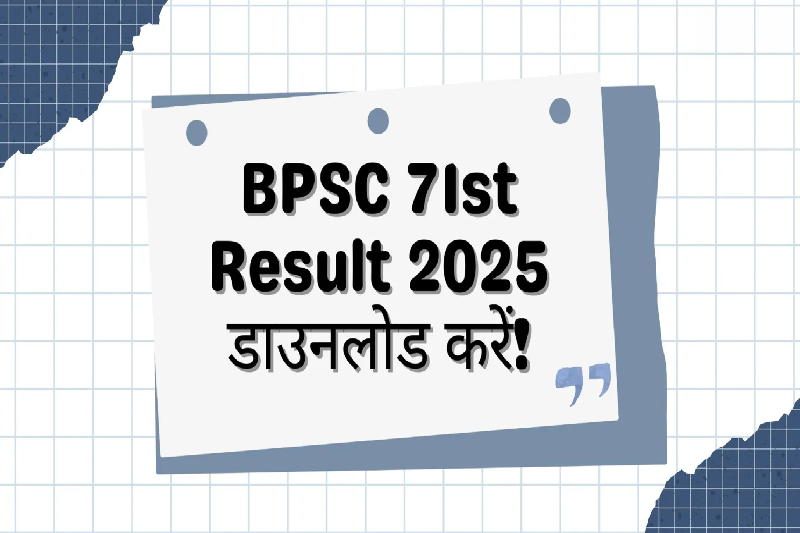
CUET UG 2025 Results Declared: 5 Students Score Over 1200 Aggregate NTA Marks, Toppers List Omitted by NTA
The Common University Entrance Test (CUET) Undergraduate 2025 results have been officially released by the National Testing Agency (NTA). After weeks of anticipation, candidates who appeared for the exam between May 13 and June 4 can now download their scorecards from the official website, cuet.nta.nic.in. Held over 19 days and 35 shifts, CUET UG 2025 was one of the largest centralized entrance exams in India this year.
In a departure from previous years, NTA has not released the names of individual toppers. Instead, the agency has published a list of the highest aggregate NTA scores in five subjects, identifying only the application numbers of these candidates. The top five scores are an impressive 1225.93, 1210.10, 1205.17, 1203.40, and 1200.12 — all calculated on the basis of the normalized scores across five subjects.
What’s noteworthy this year is the limited number of students achieving 100 percentile scores. According to data released by the NTA, only one candidate managed to score 100 percentile in four out of five chosen subjects — a significant indicator of the competitive nature and rigorous evaluation process of CUET UG 2025. In addition, 17 students secured 100 percentile in three subjects, while 150 students scored perfect marks in two subjects. The majority of high performers, 2,679 students, managed to hit the 100 percentile mark in one subject.
The CUET UG 2025 exam offered candidates a choice of up to five subjects, including 13 languages, 23 domain-specific subjects, and one General Aptitude Test. In total, the NTA administered 322 unique question papers, compared to only 99 unique sets last year. These 322 unique papers contributed to a total of 1,059 question papers, covering 57,940 questions across all subjects and languages. The increase in the number of question sets and subjects points to the growing complexity and scale of the exam.
This year, 13,54,699 candidates registered for CUET UG 2025. Among them, 6,47,934 were female, 7,06,760 were male, and five candidates identified as third gender. Out of the total registered, 10,71,735 candidates appeared for the exam. This included 5,23,988 female, 5,47,744 male, and three third gender candidates. Compared to 2024, there has been a slight increase in the total number of registered students. Last year, 13.47 lakh students registered for the exam, including seven third gender applicants.
CUET UG 2025 was conducted in 300 cities, including 15 international locations. This marks a reduction from last year when the exam was held in 379 cities, including 26 international centers. The decrease in overseas exam centers may reflect logistical adjustments or a more focused domestic approach for this year’s iteration.
In preparation for result declaration, NTA had released the provisional answer keys on June 17, and allowed students to raise objections until June 20. Following the review of grievances and revisions, the final answer key was published on July 1, clearing the path for the release of the results just a few days later.
Although CUET UG is designed to streamline university admissions across India, the number of participating universities has decreased this year. In 2024, 283 universities used CUET UG scores for undergraduate admissions. In contrast, only 239 universities are doing so in 2025. While the reasons behind the drop haven’t been officially stated, the decline could be attributed to administrative decisions, scheduling conflicts, or institutions reverting to their own entrance methods.
It’s important to note that NTA will not directly handle the admissions process. As mentioned in the result statement, candidate scores will be shared with respective universities and institutions. Students are advised to check directly with their chosen universities for updates on admission procedures, merit lists, and counselling schedules.
Universities such as Delhi University (DU), Jawaharlal Nehru University (JNU), and Jamia Millia Islamia (JMI) will begin their undergraduate admission processes shortly, based on the CUET UG 2025 scores. DU’s Common Seat Allocation System (CSAS) portal is expected to go live in August, while JNU and Jamia will follow their own counselling timelines.
DU has already stated that board exam marks will no longer be the primary criteria for undergraduate admission, with CUET UG scores now being the central benchmark. However, in tie-breaking situations, marks from Class 12 may still play a supporting role.
As India continues its transition to a more standardized university entrance system, CUET UG’s evolving structure, score normalization, and increasing subject offerings are a reflection of the push for fairness and transparency in college admissions. While challenges remain—including dropout in university participation and limited 100 percentile scorers—the test continues to serve as a critical gatekeeper to India’s most prestigious universities.
For students, CUET UG 2025 has been a landmark experience. With results out and aggregate scores published, the focus now shifts to cut-off lists, seat allocation, document verification, and finally, the start of the academic journey for lakhs of undergraduate aspirants across the country.



